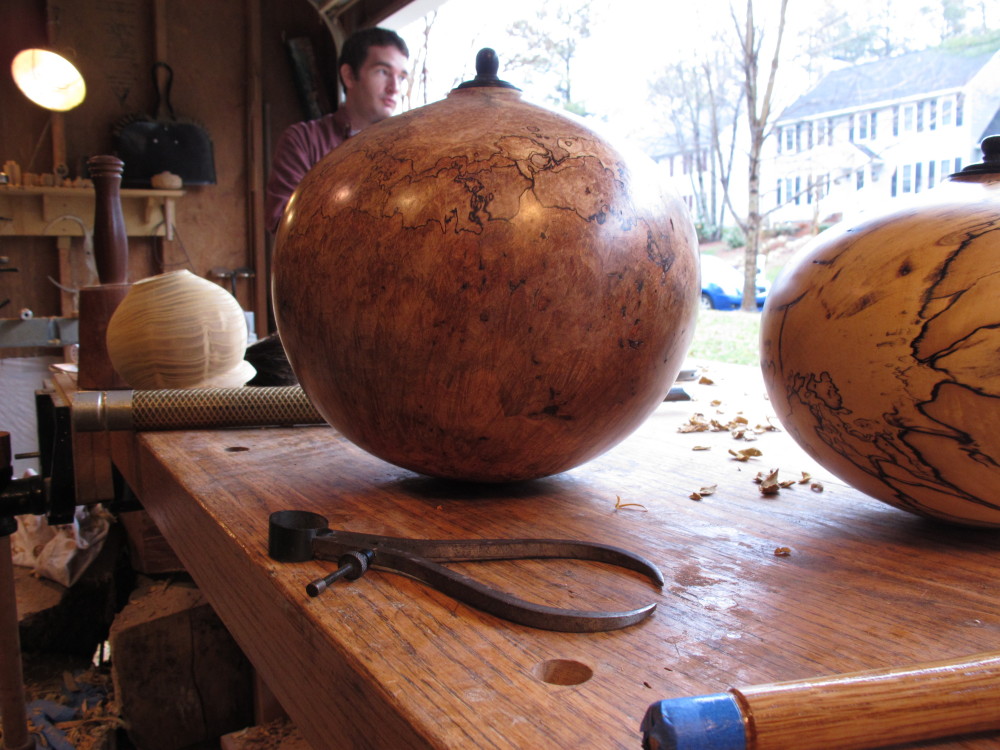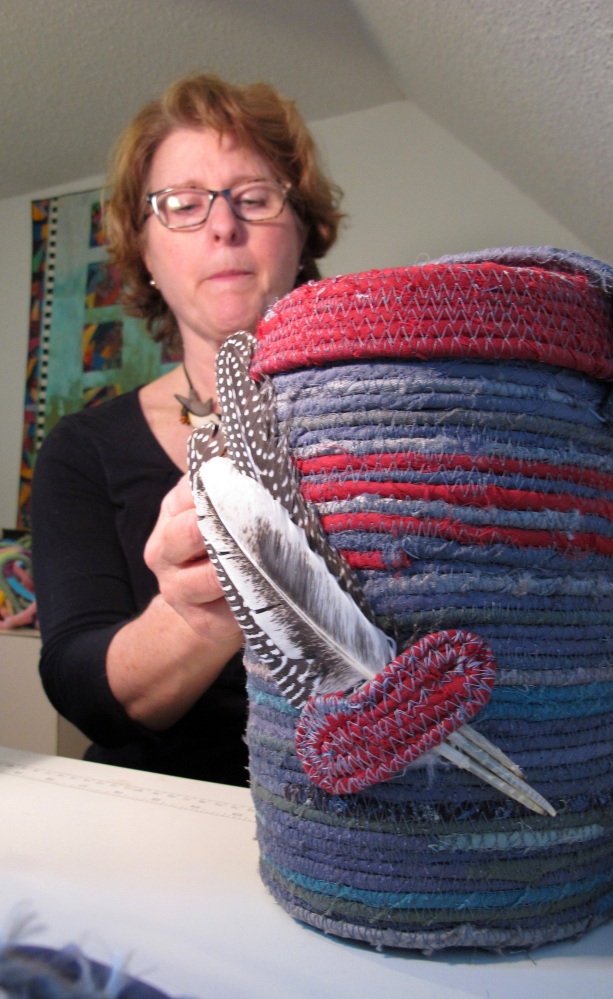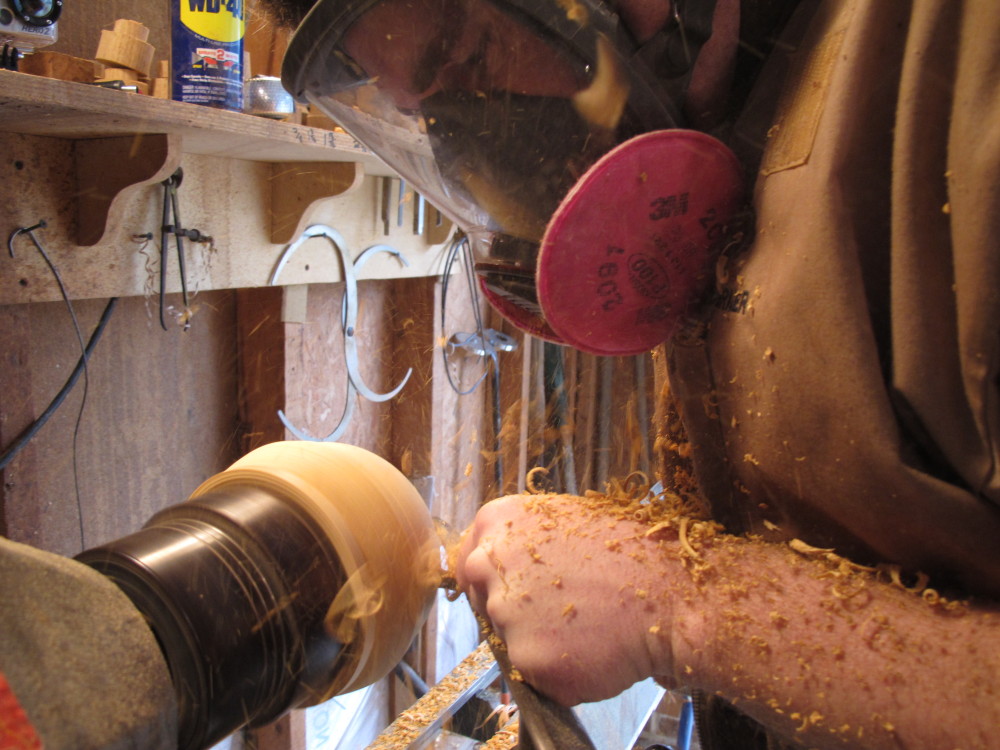APEX, N.C. — Of all the pieces Julie Moore crafts in her home studio, the most popular is a brightly colored fabric vessel she calls “the party jar.” But in this case, the guest of honor is inside the jar.
“People that are vivacious and celebrate life – this one is what they really like,” she says, lifting the ornately woven lid from the urn. “I want it to be a piece of art that they look at and they don’t think, ‘Oh. That’s Dad’s ashes.”‘
Cremations in the United States have tripled since 1985, accounting for about 44 percent of all “dispositions,” according to the Cremation Association of North America. With families becoming increasingly transient, the organization expects that to grow to 55 percent over the next decade.
And as cremations soar, more people are looking for urns that, well, don’t look like urns.
“At least one in five Americans have an urn in their house,” says Robin Simonton, executive director of Raleigh’s historic Oakwood Cemetery. “And if you’re going to put someone on your mantle, you want them to look nice.”
On April 19, Oakwood is hosting its first Urn Art & Garden Faire – a juried competition that’s drawn entries from across the country. Although the idea of a national urn contest has raised some eyebrows, Simonton thinks it’s an appropriate way to recognize this trend in “the personalization of death.”
Some have taken it to an extreme.
Foreverence, a funeral products company in Eden Prairie, Minnesota, uses 3-D printing to allow customers to design urns in the shape of a favorite musical instrument or car, and to even create a lifelike bust of the deceased. For the family of Devo guitarist Bob Casale, the company created an urn shaped like “The Energy Dome” – the synth pop/new wave band’s iconic tiered hat.
Oakwood has received more than two dozen entries, made of everything from wood, ceramic and fabric to North Carolina longleaf pine needles. The farthest submission is from Wyoming. Crafted of tooled leather, it features an American Indian brave, slumped in the saddle, and the words: “A horse we all must ride someday.”
Jason Van Duyn began making urns a couple of years ago after reading an article about a woodworker who volunteered his time to make containers for veterans whose remains were coming home in cardboard boxes. He looked at what was out there on the market and wasn’t impressed.
The Raleigh woodturner works almost exclusively with trees that have died naturally, going where the wood’s grain and imperfections take him. His urns range in price from $300 for a 70-cubic-inch piece made from a black cherry stump to $5,200 for a 450-cubic-inch red maple burl “companion” urn.
“It’s kind of on par with somebody who would get a really nice casket,” says Van Duyn, who works out of his garage. “So it’s something that the owner would be happy to have on display and that they can feel proud of and they can feel good about their loved ones being in.”
Moore got into funerary art through her own interest in “green burial.” She started with shrouds, pillows and quilts to be placed in simple pine boxes; the urns seemed a natural progression.
Often, the family will send her items of the deceased’s clothing. She recently made an urn out of T-shirts from a teenage boy who’d committed suicide.
“It made a very pretty urn,” she says. “And it was the colors of HIS life.”
Each comes with a tightly woven sateen drawstring bag that can be buried or used to scatter the ashes, Moore says. Urns intended for burial are made entirely of organic, biodegradable materials.
Moore began showing her pieces about two years ago. Sometimes, her conceit is a bit too effective.
“I had one woman who was holding it and, ‘Oh, it’s so pretty. It’s beautiful. What do you put in here?’ And I said, ‘Well, actually, you put cremains in there. It’s for ashes,”‘ Moore says with a grin. “She dropped it and ran as if she’d, like, touched death or something.”
Raleigh resident Norma Marti bought her own party jar about two years ago.
“I turned 60 that year, and so that last quarter century of life was looming,” she says. “I thought, ‘Well, that’s really cool.’ And I can actually display it as art – until it’s needed.”
When guests ask about the piece in her family room bookcase, she doesn’t tell them that it’s a funerary urn. But her children know what it’s for.
“When the time comes,” she says with a chuckle, “then hopefully I’ll be able to fit into it.”
Send questions/comments to the editors.





Success. Please wait for the page to reload. If the page does not reload within 5 seconds, please refresh the page.
Enter your email and password to access comments.
Hi, to comment on stories you must . This profile is in addition to your subscription and website login.
Already have a commenting profile? .
Invalid username/password.
Please check your email to confirm and complete your registration.
Only subscribers are eligible to post comments. Please subscribe or login first for digital access. Here’s why.
Use the form below to reset your password. When you've submitted your account email, we will send an email with a reset code.